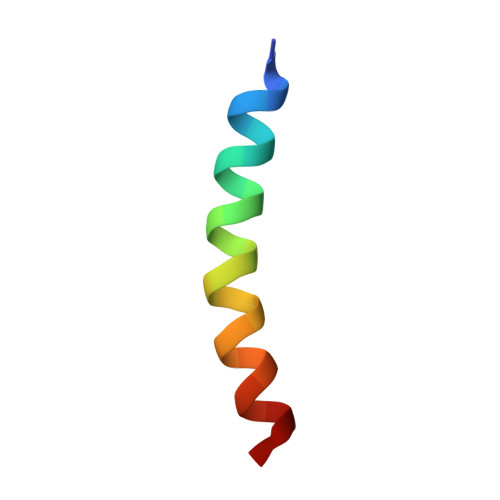Interactions between the Conserved Hydrophobic Region of the Prion Protein and Dodecylphosphocholine Micelles.
Sauve, S., Buijs, D., Gingras, G., Aubin, Y.(2012) J Biological Chem 287: 1915-1922
- PubMed: 22128151
- DOI: https://doi.org/10.1074/jbc.M111.279364
- Primary Citation of Related Structures:
2LBG - PubMed Abstract:
The three-dimensional structure of PrP110-136, a peptide encompassing the conserved hydrophobic region of the human prion protein, has been determined at high resolution in dodecylphosphocholine micelles by NMR. The results support the conclusion that the (Ctm)PrP, a transmembrane form of the prion protein, adopts a different conformation than the reported structures of the normal prion protein determined in solution. Paramagnetic relaxation enhancement studies with gadolinium-diethylenetriaminepentaacetic acid indicated that the conserved hydrophobic region peptide is not inserted symmetrically in the micelle, thus suggesting the presence of a guanidium-phosphate ion pair involving the side chain of the terminal arginine and the detergent headgroup. Titration of dodecylphosphocholine into a solution of PrP110-136 revealed the presence of a surface-bound species. In addition, paramagnetic probes located the surface-bound peptide somewhere below the micelle-water interface when using the inserted helix as a positional reference. This localization of the unknown population would allow a similar ion pair interaction.
- Centre for Vaccine Evaluation, Biologics and Genetic Therapies Directorate, Health Canada, Ottawa, Ontario K1A 0K9, Canada.
Organizational Affiliation:
















